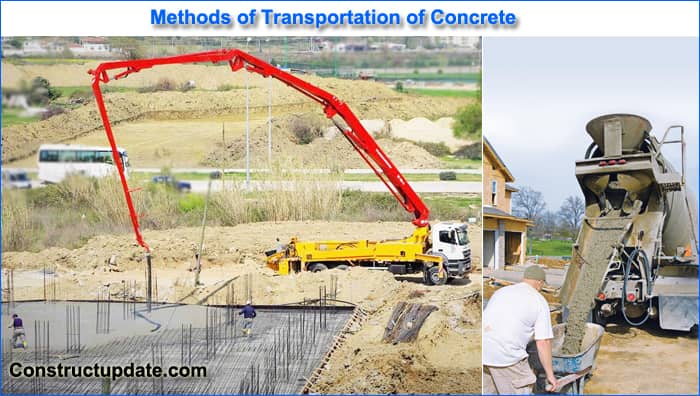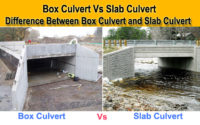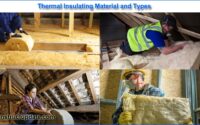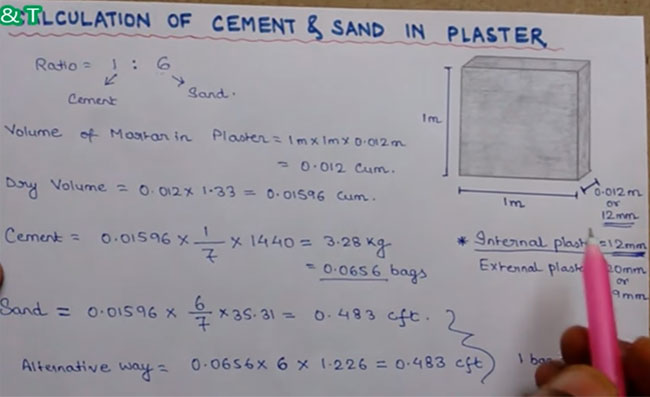What is Concrete Transportation | 10 Methods of Concrete Transportation | Importance of Concrete Transportation
Concrete is a complicated combination made of cement, sand, coarse material, water, and chemical admixtures (if required). Concrete may be made quite easily, but it must be transported for placement, which is essential. Because it affects the quality of the finished product, concrete transportation must be done correctly. Within a certain window of time prior to its initial setting phase, concrete must be moved to the construction site. Segregation and loss of slump may occur in the concrete if the handling time or distance is increased.
Concrete transportation is the act of moving concrete from a mixing plant to a construction site. The major goal of shipping concrete is to avoid any changes to the water-cement ratio, slump (the consistency or workability of the concrete), air content, homogeneity, and segregation from their intended conditions.
Importance of Transporting Concrete
Concrete transportation needs to be carefully planned and effectively coordinated. For modest work, a thirty-minute travel time is typically appropriate. Concrete must be removed from agitating carrying equipment for a central or mobile plant, such as a ready-mix plant, within two hours. This duration is shortened to one hour if non-agitating transportation equipment is utilised. In order to avoid cold joints or honeycombing, any delays must be avoided.
While determining the method of transport for concrete, numerous considerations, including the following, must be taken into account.
- Type and components of the concrete mix
- Weather variables like temperature, humidity, wind speed, etc.,
- Size of construction,
- Type of construction,
- Topography,
- Location of the batching plant,
- Cost of transportation

Methods for Transportation of Concrete
Concrete can be moved in a variety of ways, including horizontally or vertically above ground level, vertically below ground level, etc., as well as with a variety of tools and equipment.
1. Mortar Pan
When pouring small amounts of concrete, a mortar pan is utilised. This method causes a significant loss of water, especially when pouring concrete in hot weather, due to the greater surface area of the concrete being exposed to drying conditions. Keep in mind that the mortar pan should be clean and wet before beginning to transfer concrete.
2. Wheelbarrow
Concrete is being moved around in a wheelbarrow at ground level. It’s a typical alternative to using a mortar pan to move concrete on the ground. In order to prevent concrete segregation due to vibration, wheelbarrows are equipped with pneumatic wheels when the transportation distance is long or the terrain is uneven.
3. Crane, Bucket, and Ropeway
Cranes are very useful while building skyscrapers. Cranes enable the horizontal and vertical movement of concrete because they are swift and adaptable. The green concrete mix is hauled in buckets and skips by cranes; the latter has a discharge door at the bottom, but the former needs to be tilted to be emptied. The bucket’s volume of 0.5 cubic metres makes it appropriate for light activities.
The majority of concrete work, including the construction of dams and bridges, calls on the use of a ropeway and buckets to transport the heavy material from one location to another. In this instance, concrete is mixed on the bank and then moved in a bucket using a pulley or other device to the location where it will be released. On the riverbed, steel towers are erected to exert tension on the rope.
4. Belt Conveyor
Belt conveyors are used sparingly because they separate materials at steep slopes, direction change points, roller points, etc. The continual belt vibration in a belt conveyor system contributes to segregation as well. Conveyor belts with variable speeds are utilised nowadays.
Large amounts of concrete can be moved fast and easily using this belt conveyor. If the discharge arrangements are not set up correctly, it will cause a significant issue when it returns.
5. Dumpers and Trucks
For vast distances, trucks and dumpers (horizontal haulage) are utilised. Ordinary trucks and dumpers tend to separate concrete during transit because of the jolting on the ground.
6. Chute
Concrete is moved from the ground level to the lower level using a chute. It is utilised when there is not enough room, such as in trenches, for the labour to reach the concrete placement. The slope of the surface should range from 1 vertical to 2.5 horizontal, but not be too flat. Without any separation or segregation, concrete may become a slightly compact mass.
7. Skip and Hoist
For delivering concrete upwards during the construction of tall buildings, skip and hoist are used. The mixer immediately feeds the skip at ground level, and it discharges either automatically or manually at the discharging point. For the purpose of moving concrete, a skip travels along a vertical rail.
8. Pumps and Pipelines
Concrete pumping is a widely used and more dependable way of moving and depositing concrete. The suction stroke, which draws the concrete into the pipe, initiates the device’s operation. A piston is offered for the suction and delivery of concrete.
To match the pump and the needs of the placing rate, it is crucial to select the proper diameter and wall thickness of the pipeline. High pumping pressure is necessary for long horizontal distances, hence large-diameter pipes are the best option because they offer less flow resistance. Due to gravity and the weight of the concrete in the line, the lowest diameter of pipelines should be utilised while pumping concrete to a height.
9. Tremie
Concrete is most frequently transported underwater using tremie, which uses tremie pipe. The French word hopper is where the word “tremie” derives from. A tremie pipe is a pipe with a diameter of roughly 20 cm that may be easily coupled for lengthening or shortening. To make it easier to pour concrete, a funnel is attached to the top end. The bottom end is sealed off with a stopper, thick polyethylene sheet, or other suitable material before being lowered underwater and allowed to rest where the concrete will be added.
10. Transit Mixer
One of the most common forms of concrete moving equipment in ready-mix concrete plants is the transit mixer.





